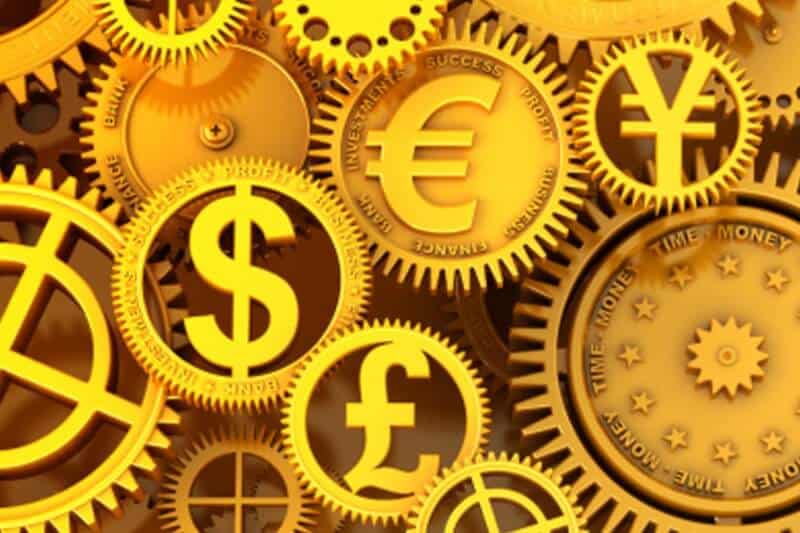
Bond yields in high-level markets are declining for the last 20 years. What is happening with negative or zero bond yield?
By Guy Avtalyon
Zero bond interest rates mean that the yields of the bonds are 0%. This indicates a monetary policy that aims to stimulate the economy but is approaching its short term limits as the short term interest rates can’t be negative. This situation indicates that monetary-policy makers and markets see increased deflationary pressure on the currency of the country.
This leads to long term bonds’ interest rates to be negative. For example, in Germany the ten-year bond yield is negative, it is minus 0.02 percent. Actually, $13 trillion worth of bonds is giving negative rates. This interest rate will be accruing nominal losses to investors until 2030.
In Japan, low-interest rates on a bond are predicted to stay zero or negative even longer. The 10-year bond yields in the US are a bit above 1% and the UK about 2.4%. Both countries suggest a minimum or no tendency of raises in the near future.
Moreover, bond yields in high-level markets are decreasing for the last 20 years which was unbelievable just 2 decades ago.
Why zero bond yields happen now?
The financial crisis in 2008 loan growth shifted negative and continued to be depressed for a long time. It happened because households and companies had too much debt and they wanted to pay down debt. They wanted to have no debts even when the central banks started cutting the interest rates closer and closer to 0%.
The same case was seen in Japan in the 1990s during the Lost Decade.
Bonds interest rates are market prices, meaning they are a measure of the supply and demand of bonds. The demand is driven by a desire for low-risk assets. And bonds are a less risky asset than stocks because they offer fixed payments for an exactly fixed time. The bondholders will take something even if the country or company that issued bonds experience the crash. The interesting thing about bonds is that the riskier bond is, the pay-out is higher because investors are compensated for accepting the higher risk.
Today, the bonds are less risky than ever. The investors are buying bonds with lower yields. Low-risk assets are exceptionally good-looking when markets are unpredictable or uncertain. For example, today in the US you have investors worry that a recession caused by a trade war with China could crash the stock markets.
That’s why even negative bond yield rates are more desirable than the other choices.
Moreover, pension funds usually are buying bonds, no matter how high or low is the rate. Either from prudency of fund managers or the regulation. For instance, German pension funds hold bonds more than other assets because they can invest only 35% in risky securities.
How does this impact your investments?
Well, it depends on what is your outlook as an investor, meaning are you, borrower or saver. That will determine your benefit from zero bond yield.
Low rates can be very bad for retirees. They more often hold more bonds. Retirement investment expenses have grown amazingly costly. Baby boomers may have profited from economic increase and growing stock markets. But their retirement is much more costly also. Anyway, savers and pensioners are punished when the nominal value of their investment falls.
Actually, everyone will get a lower return on investments, or be forced to take more risk to generate a higher return.
If stock prices decline that will cause more economic instability. On the other hand, a lower cost of capital can boost investment and push more growth. That will be the benefit of everyone. And this possibility is the driver behind the policy of cutting interest rates by central banks.
Why a zero bond yield is bad?
If the price is zero, savers will accumulate less and get less return on prior savings.
Imagine this deal as an example of zero bond yields. You borrowed to some company $1,000 today and it will return $900 or $1,000 with no interest rate to you in a decade.
What?
This is exactly what is happening with negative or zero bond yield. That is not how it should work. You have to make a profit when you put your money in the market or the bank.
Nicholas Colas, the co-founder of DataTrek, explained: “Bonds are supposed to pay the owner of capital something to pry the money out of their hands.”
But, some really wise investors have invested almost $15 trillion in government bonds that offer negative interest rates, per a report of Deutsche Bank. That is approximately a quarter of the overall bond market.
Negative interest rates of long term bonds in a situation of the zero-bound interest rates allow politicians to give more promises waiting the day when interest rates return to rational levels, and taxes rise to pay for it all.



Leave a Reply